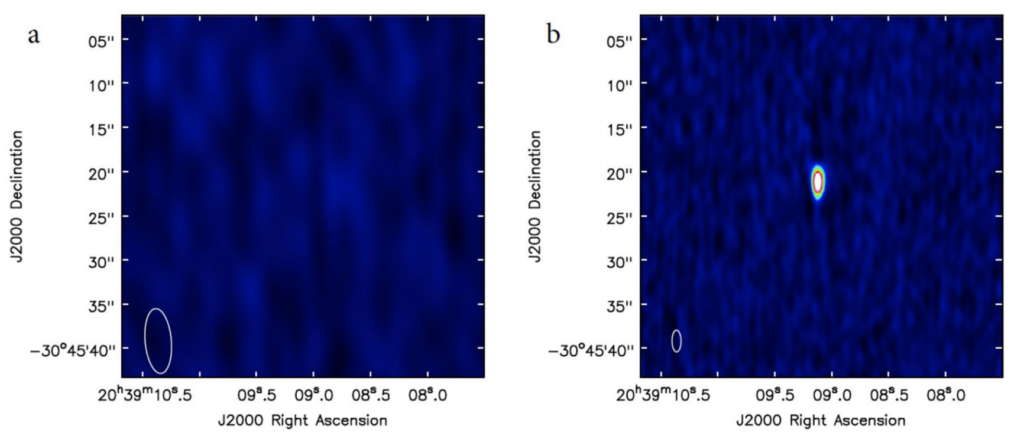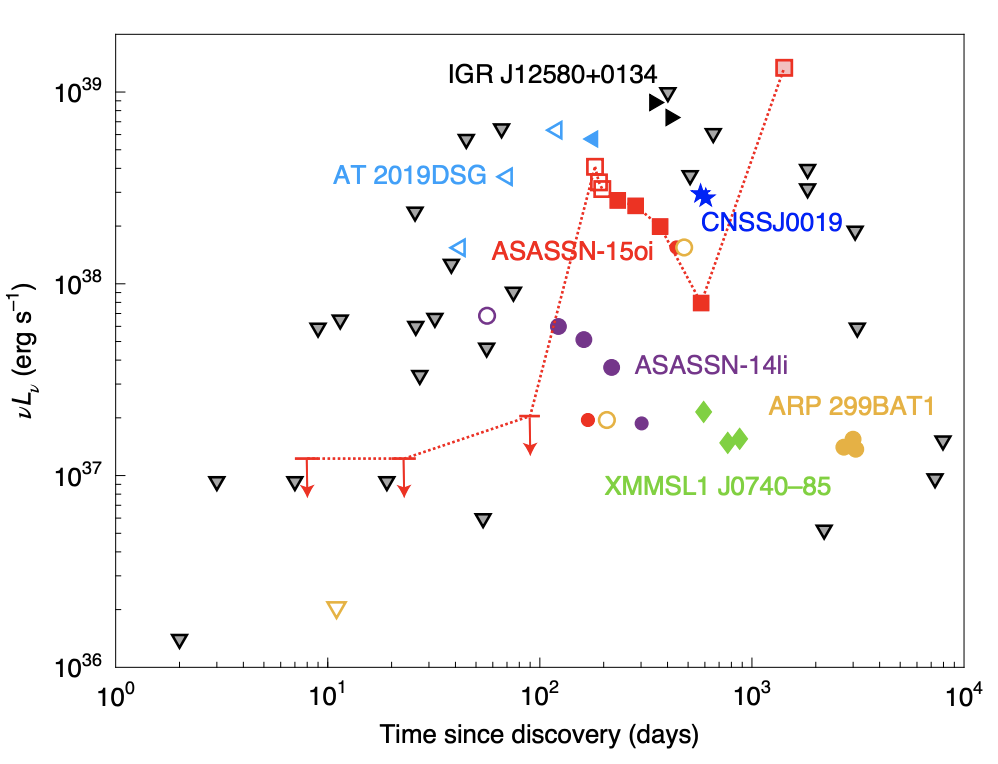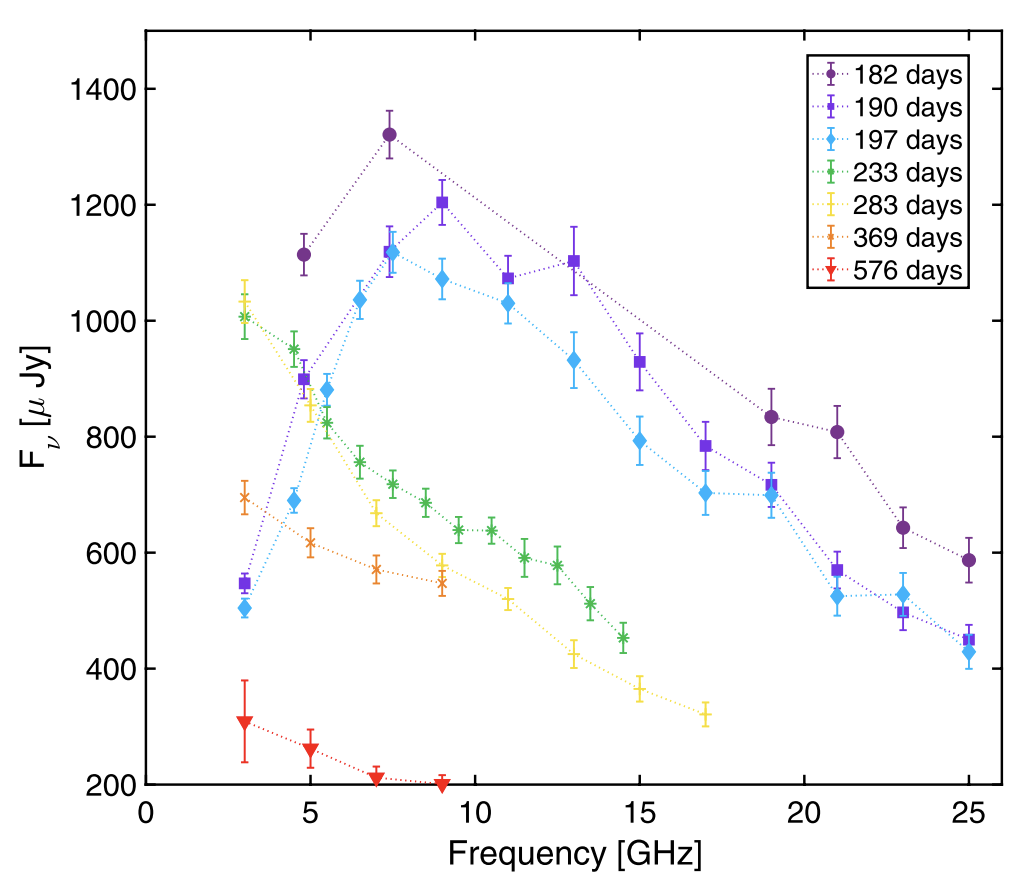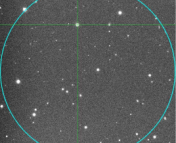Title: Delayed Radio Flares from a Tidal Disruption Event
Authors: A. Horesh, S. B. Cenko, I. Arcavi
First author’s institution: Racah Institute of Physics, The Hebrew University of Jerusalem
Journal: Published in Nature Astronomy. Open access on ArXiv.
Disclaimer: The author would first like to publicly state that Black lives and Black Trans lives matter. Secondly, the author condemns all police brutality against people of color. Lastly, the author recognizes that the writing of this article was performed on the stolen land of indigenous people.
One of These Events is Not Like the Others
Main sequence stars (like our sun) and supermassive black holes (SMBHs) don’t really get along. If such a star finds itself orbiting too close to the galactic center, it becomes indefinitely trapped in a gravitational spider web formed by the SMBH. With escape now impossible, the star enters a death plunge wherein the SMBH violently shreds the star, forming a turbulent accretion disk of infalling stellar material. The brilliant emission of photons that results from this stellar demise is called a tidal disruption event (TDE).
The specific type of electromagnetic radiation that astronomers detect from TDEs appears to be directly linked to the physical mechanisms responsible for stellar destruction by SMBH. Presently, we observe a variety of emission from TDEs: some produce radiation across the electromagnetic spectrum while others are only visible in certain bands like X-rays or ultraviolet/optical. Understanding the type of light we see from TDEs has immense implications on how we can constrain physical processes such as accretion disk formation, relativistic jets and supersonic outflows.

Today’s paper presents an enigmatic tale of radio emission from a TDE called ASASSN-15oi. This event was discovered by the All-Sky Automated Survey for SuperNovae (ASASSN) in 2015 and quickly observed by the authors in radio wavelengths for the following months. However, this initial campaign to search for radio photons from ASASSN-15oi was found nothing until, surprisingly, a bright burst of radio emission was detected in early 2016, ~182 days after discovery! This unexpected radio flare (Fig. 1) prompted the authors to closely monitor the behavior of ASASSN-15oi with the Very Large Array (VLA) in order to understand the nature of this mysterious emission that had never been observed in any known TDE prior.

No Perfect Fit
Following the radio flare, the authors set to work trying to understand the origin of these bright yet fast-fading radio photons. As discussed in the paper, physical mechanisms for radio emission in TDEs are directly linked to both the evolution of the TDE luminosity over time (Fig. 2) and the shape of the radio spectrum (Fig. 3). Using standard dynamical models for TDEs, the authors were first able to determine that the radio photons from ASASSN-15oi were potentially generated by relativistic acceleration of particles (synchrotron radiation) in an inhomogeneous medium of stellar material shredded during the tidal disruption. But what could have caused such a delay in radio emission?
Compared to a variety of scenarios, all the properties of ASASSN-15oi’s radio flare cannot be explained completely by one single process in the TDE. For example, the fast rise from non-detection to detection (Fig. 2) is difficult to explain with even an extreme case of relativistic jet formation. If the jet was pointed off-axis, it could possibly explain the rapid increase in radio flux but this scenario, as well as other models involving relativistic jets, unfortunately cannot provide an explanation for the spectral behavior of this TDE shown in Figure 3.

The authors then proposed that the radio flare in ASASSN-15oi might have been the result of delayed accretion onto the SMBH that then launched an outflow of stellar material much after the initial disruption. However, standard models for TDEs could still be applied in this case and would then also have difficulty explaining the shape and evolution of the radio spectrum. Another exotic situation suggested by the authors is that the star was disrupted by two SMBHs in a binary system. This might lead to many flares as the mess of shredded stellar material continued to flow into both SMBHs.
Despite no concrete model, ASASSN-15oi continued to perplex astronomers when it produced yet another radio flare in 2019 that is now the subject of new studies on this amazing event. More radio observations of both this TDE and new events with delayed emission will be crucial to understand the complex nature of these fascinating transient events. You can never have enough flare!
Edited by: Mitchell Cavanagh
Featured Image Credit: NASA/S. Gezari (JHU)/J. Guillochon (UCSC)




